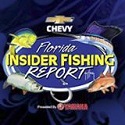 Springtime Sailfishing is a lot different than winter, where we do a lot of trolling ballyhoo, kite fishing or slow trolling live baits to cover water and hopefully find fish. In the spring, the fish are on the color edges and more often than not up and tailing on the surface, so all our fishing is sight fishing.
Springtime Sailfishing is a lot different than winter, where we do a lot of trolling ballyhoo, kite fishing or slow trolling live baits to cover water and hopefully find fish. In the spring, the fish are on the color edges and more often than not up and tailing on the surface, so all our fishing is sight fishing.
We target these fish on color changes in 120 to 400 feet of water, depending on the conditions. What we’re looking for is the area where the blue water of the Gulf Stream meets the green water of Florida Bay. That color change creates an edge, or more specifically, a color edge that the sailfish like to swim down.
What we’ll do is work our way up the color change looking for fish tailing. The best conditions for that mixing of colors and tailing fish is wind against current. In the Upper Keys, what you want to find is a northeast wind and a current that is flowing in a northeasterly direction so the wind and current are going against themselves. Then down off Key West where you have the Gulf Stream meeting the Atlantic Ocean, you want to have an easterly wind against a current that is flowing from west to east.
What happens when you get wind against current is the green bay water meets the deep blue ocean water, and where those two waters mix, you’ll get an area that might be anywhere from 50 feet to several hundred yards wide that has this powder blue colored water. That’s the water we’re looking for, because the sailfish stand out and are a lot easier to spot in that powder blue water than the other colors. In the dark blue water, you can never see the fish until they’re right on top of you.
When you find those conditions, you want to put up a kite or two and hang a live goggle-eye or threadfin herring, while at the same time having a couple of spinning rods ready to pitch a live pilchard or cigar minnow to any fish you see tailing on the surface within casting range. The normal set-up is to use 20 pound conventional rods on the kites and 20 pound spinning rods for your pitch baits. A lot of time we’ll put five-gallon buckets filled with water in each corner of the transom and that’s where you’ll put the hooked pitch bait, so if you spot a sail all you have to do is grab a rod and cast to it. The pitch baits are hooked directly, while the kite baits are bridled using thread or rubber bands.
Over the last couple of years the sailfish, like the tarpon in the keys, have become picky when it comes to leader size. In the past, we’d use 50 or 60 pound fluorocarbon leader for sight fishing, but these days you want to use 30 or 40 pound Suffix fluorocarbon leader, preferably 30 pound test to get more bites. If you use these lighter leaders in combination with a 7/0 VMC Tournament Style circle hook you’ll hook the fish in the corner of the mouth and have less chance of breaking it off. I’ll use a smaller 5/0 VMC circle hook on the pitch baits, since those baits tend to be smaller. That being said, you still want to let the fish run and keep the drag a bit light so the fish doesn’t cut the leader with its bill.
The average sailfish this time of the year is 30 to 40 pounds—they look a lot larger than they weigh, with fish to 60 pounds common. Since the majority of the sailfish caught are released, they are very educated and leader shy fish, so you’ll get twice as many bites with the lighter leader.
Put out the kites and work your way into the wind, watching for fish tailing down-sea. If you don’t have the optimum wind conditions that create the color change, then you’ll find more of a green to deep blue mix, and you’ll want to troll rigged baits or live baits on the blue water side of the color change. If you get a bite, be ready for more fish to show up. These fish regularly travel in small schools or pods of fish, so you want to look for fish following the hooked fish or in the same area on either side of the boat to pitch a live bait to. About half the time, we catch these fish in multiples.
When you get the fish to the boat, don a pair of gloves and grab the fish’s bill to control it and then remove the hook, shoot a photo without pulling the fish out of the water, and then release it to fight another day.
